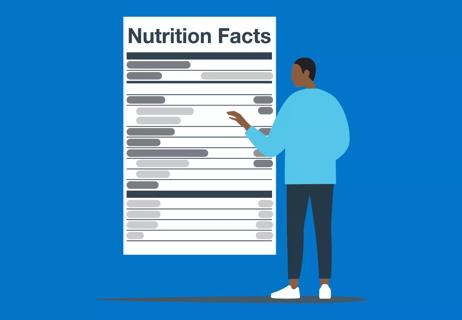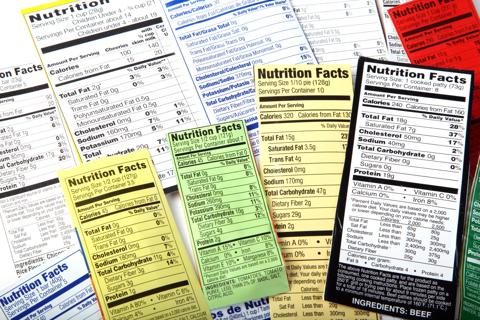All it takes is a little planning

Some love to do it and others absolutely hate doing it — we’re talking about grocery shopping.
Advertisement
Cleveland Clinic is a non-profit academic medical center. Advertising on our site helps support our mission. We do not endorse non-Cleveland Clinic products or services. Policy
When it comes to food budgeting for you or for your whole family, it can make anyone’s head spin.
But who says grocery shopping should be difficult when you’re on a budget? The good news is that no, you don’t have to sacrifice delicious food. With a little advanced planning and creativity, you can eat balanced, healthy meals that your whole family loves.
Preventive cardiology dietitian Kate Patton, MEd, RD, CSSD, LD, shares 10 tips for smart shopping — and how to avoid draining your wallet.
Products like protein bars and dried fruits are ideal for buying from online retailers like Amazon or your local store’s online site. It saves you money because you won’t have to pay food tax and if shipping is free, that’s an added incentive. Just be sure to check expiration dates.
Spoiled food that’s tossed into the garbage is no bargain. Try to buy fresh produce in small portions that you know you will eat within a week. For example, it’s OK to split up bananas or grapes according to how many you need. Instead of buying mostly fresh produce, look for frozen fruits and vegetables, which are less perishable. and allow for portion-controlled servings. It also makes for healthy snacks and meals easily accessible, so you won’t have an excuse not to load up on your fruits and veggies.
Advertisement
You’ll not only save cash, but you’ll also enjoy the most wholesome food on the market. Print out a helpful list of produce and stick it on your fridge. This way, you’ll always be aware of what’s in season when you head to the grocery store.
Who doesn’t love supporting their local businesses? Buying locally grown produce helps stimulate your local economy and you can also freeze it into smaller portion sizes.
“Each stroke of the knife in processing costs more at checkout,” says Patton. “Buy in bulk and do it yourself to cut the costs.”
Make it a goal to buy your meat and cereal in bulk. Patton recommends buying fresh pork loin and slicing it into low-fat loin chops at home, buying a roast and cubing it into chunks or buying a chicken and cutting it up at home. If you’re not a meat eater, consider beans as a low-cost protein source. Buy oatmeal in bulk instead of individual flavored packs that have added sugar and salt. Plus, they cost more.
Keep your budget from inflating by sticking to your grocery list. Use those weekly mailers to plan out your grocery purchases for the week and take some time to compare prices for your favorite food from different stores. This helps prevent impulse buying, which can lead to the quick demise of your food budget.
“Forgo ‘buy one, get one free’ offers, too,” says Patton. “Either you’ll wind up buying foods you won’t eat, or you’ll pay an inflated price for the ‘buy’ item to cover the cost of the free one.”
Convenience is great until you have to pay more for it. Go to the deli or refrigerated sections for ready-made foods only on occasions when you’re willing to pay more for the convenience. You pay a higher price to have someone else prepare the meal, and when you start keeping that in mind while you’re shopping, you’ll start to back away from the prepared food aisle.
Clipping and using coupons can feel like an accomplishment, but on the flip side, coupons may persuade you to purchase items you generally wouldn’t buy.
“If the coupon is for an item you can use, look for stores that give double coupon redemption for extra savings,” she says.
The possibilities are endless when it comes to using your creativity to work with leftovers. Create soups, casseroles and new dishes with your leftovers to avoid tossing out unused food. If you run short of ideas, browse websites for recipes and just key in your leftover ingredients.
Buying products from these outlet stores can help you stick to your grocery budget.
Advertisement
“Prices are reduced by more than 50% from store prices,” says Patton. “Bread products freeze well and are versatile. You can use them in sandwiches, in recipes calling for breadcrumbs and for stuffing.”
Not only are they more costly, they may not save you calories, either.
“Remember that fat-free doesn’t mean sugar-free, and vice versa,” she warns. “Always keep an eye out for the labels to decide if these snack packs are worth the splurge.”
Advertisement
Learn more about our editorial process.
Advertisement

An occasional shopping spree can boost your mood by distracting you from stressors and pumping your brain full of ‘happy hormones’

Signs you’re a compulsive spender include lying about purchases, buying things you don’t use and treating shopping like a hobby

Information on serving size, calories and nutrients can help you make healthy choices

Whole-grain options low in sugar and sodium form the foundation of a good-for-you breakfast

From planning ahead to resisting bargains, these tips could also save you money

Avoid bringing bacteria home

4 ways to identify foods that are (actually) good for you

Edamame, lentils and chicken breast are good sources of protein

The best parenting style balances enforcing rules and showing plenty of love

Tips include cutting back on sugar, focusing on exercise and managing stress

It can be harder to let go when you’ve invested time, energy and emotions — but it might be the healthier choice long term